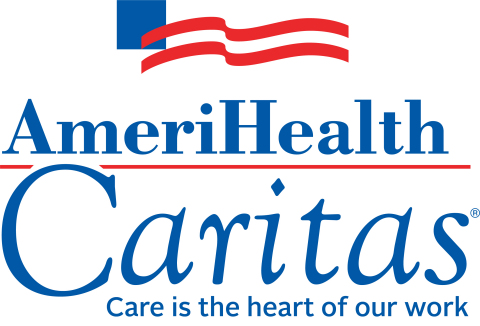PHILADELPHIA--(BUSINESS WIRE)--Health disparities are often associated with race, ethnicity, and income. But the 60 million Americans who, according to the United States Census Bureau, live in rural areas1 face unique health care disparities of their own. These disparities must also be addressed to improve the quality of care and achieve health equity for rural populations.
Dr. Andrea Gelzer, senior vice president of medical affairs for AmeriHealth Caritas, a national leader in health care solutions for those most in need, notes rural populations face barriers to good health, including:
- Greater distances between communities, and therefore health care providers and other social services.
- A shortage of physicians, especially specialty care providers, practicing in rural areas.
- A lack of transportation options such as mass transit.
- A scarcity of large grocery stores in many small towns.
- Rural hospitals closing, further exacerbating the lack of health care options in these areas.
The resulting rural health disparities include higher rates of all-cause mortality,2 higher age-adjusted death rates for many chronic health problems,3 and lower life expectancies.4 In addition, data from the Substance Abuse and Mental Health Services Administration finds higher rates of underage drinking, binge drinking, and cigarette smoking in non-metro areas than in metro areas.5
“The health disparities that we see in rural areas are worsened by the lack of easy access to health care and social services,” said Dr. Gelzer. “While the shortage of and distances between some primary and specialty care providers particularly stand out, rural populations also frequently face a lack of healthy food choices in grocery stores and other resources within a community that can affect social determinants of health.”
Dr. Gelzer says the health care community can help alleviate some of the resulting health disparities by bringing services closer to rural populations.
Some of the things that health plans, providers, government bodies, and/or community organizations can do include:
- Expanding telemedicine and similar services — While telemedicine is not appropriate for all types of care, it can make primary care, routine specialty care, and outpatient behavioral health care services more accessible to areas lacking these types of providers. In addition to covering these services where they already exist, health plans can collaborate with providers on pilot programs to expand telemedicine services to new areas.
- Establish or sponsor mobile screening programs — Mobile screening programs allow patients to receive certain preventive screenings at remote locations, making them more accessible to patients facing transportation or accessibility challenges. Health plans can collaborate with providers to establish such programs or sponsor existing ones. For example, two of AmeriHealth Caritas’ Medicaid health plans in Pennsylvania are collaborating with local health systems to have a mobile mammography unit visit local communities to screen local women for breast cancer.
- Incentivize providers who serve rural populations — New doctors and other health care providers often complete their educations and training burdened by hundreds of thousands of dollars of debt, and as a result may be hesitant to take lower-paying jobs in rural areas. Government bodies and community organizations can make these jobs more enticing by expanding grant programs that help new health care providers pay down their debt in exchange for working in rural areas for a certain period of time. Health plans should also consider establishing their own incentives, such as value-based contracting programs for rural health care providers or bonus payments to providers who visit communities lacking a physical location.
- Establish or sponsor programs to address food insecurity — One of AmeriHealth Caritas’ Medicaid health plans in Pennsylvania has teamed up with a YMCA serving two rural central Pennsylvania counties on a program that brings a bus to the counties’ outlying communities to provide healthy meals for rural children during the summer months, when those children are not able to obtain meals through their school. AmeriHealth Caritas has also planted community gardens in rural Pennsylvania communities, helping them develop their own source of fresh vegetables. Other health plans and community organizations serving rural areas should consider undertaking similar projects.
About AmeriHealth Caritas
AmeriHealth Caritas is one of the nation’s leaders in health care solutions for those most in need. Operating in 12 states and the District of Columbia, AmeriHealth Caritas serves more than 5 million Medicaid, Medicare, and Children’s Health Insurance Program (CHIP) members through its integrated managed care products, pharmaceutical benefit management and specialty pharmacy services, and behavioral health services. Headquartered in Philadelphia, AmeriHealth Caritas is a mission-driven organization with more than 35 years of experience serving low-income and chronically ill populations. AmeriHealth Caritas is part of the Independence Health Group in partnership with Blue Cross Blue Shield of Michigan. For more information, visit www.amerihealthcaritas.com.
1 One in Five Americans Live in Rural Areas. United States Census Bureau, 9 Aug 2017 (accessed 17 June 2019). https://www.census.gov/library/stories/2017/08/rural-america.html
2 Hoffman, A and Holmes, M. Regional Differences in Rural and Urban Mortality Trends. North Carolina Rural Health Research Program, August 2017 (accessed 17 June 2019). http://www.shepscenter.unc.edu/download/15326
3 Centers for Disease Control and Prevention. Leading Causes of Death in Nonmetropolitan and Metropolitan Areas – United States, 1999-2014. Morbidity and Mortality Weekly Report, Jan 2017, 66(1), 1-8.
4 Singh, G.K., Daus, G.P., Allender, M., et. al. Social Determinants of Health in the United States: Addressing Major Health Inequality Trends for the Nation, 1935-2016. International Journal of Maternal and Child Health and AIDS, 2017, 6(2), 139-164. https://www.ncbi.nlm.nih.gov/pmc/articles/PMC5777389
5 Results from the 2016 National Survey on Drug Use and Health. Substance Abuse and Mental Health Services Administration, 2017 (accessed 20 June 2019). https://www.samhsa.gov/data/sites/default/files/NSDUH-DetTabs-2016/NSDUH-DetTabs-2016.pdf




